

More Indy yearbook feedback ... and 'Jungle's' wedge
Back safe and sound and mostly caught up after the Big Go (my 29th straight!), and I thought I’d wrap up a few loose ends before moving on to our next topic. The 1977 NHRA U.S. Nationals Yearbook continues to be a favorite topic (I’m actually quite surprised that it affected so many people the way it did me), so I’ll begin with that.
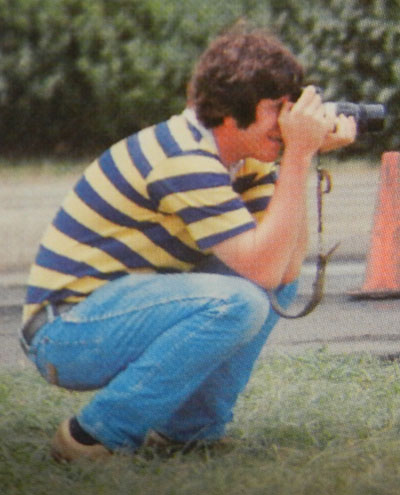 |
After interviewing John Plisky, son of the yearbook’s late driving force, I was put in touch with another member of the editorial team, Richard Pasley, courtesy of East Coast photo ace Norman Blake. Pasley had lots of great memories of working on the book and offered his remembrances of its creation, which I share below. It’s quite a long read but offers great insight.
“I have such incredibly fond memories of that project, and some serious regrets as well, principal among them not keeping in touch with John Plisky,” he wrote. “Dreamers are a dime a dozen, but he put absolutely everything he had and more into that project, with nothing but the purest of intentions driving his mania. I was just a kid back then, but John was a bigger kid than I ever was in his absolute love for drag racing and the amazingly complex associations that the sights, sounds, smells, and tastes that the sport implants in the hearts and minds of diehard fans. He took a leap with that project that may have been somewhat foolhardy, but how many of us can say that we produced something that, after 34 years, is still fresh in the minds of those who were there and those who had the good sense to lay out $7 for what was really a groundbreaking endeavor. It's really interesting to me that an insurance guy (typically not the biggest risk takers) had the heart and soul of a fearless, pedal-to-the-metal racer when it came to realizing his true passion.
“I'm very sad that I did not act on the passing impulse to try to track down John Sr. a few years ago, especially since he was still alive at the time. Oddly, and a bit frighteningly, this is very similar to when I thought years ago to reconnect with Leslie Lovett after many, many years of having strayed from my involvement in drag racing. Email and the Internet had made digging into the past much easier, but I was crushed to read that Les had died just a week or so before the spirit had moved me to reconnect. He, even more so than John Plisky, had had a really significant impact on my career, and I missed that opportunity to thank him personally.
 |
“Growing up in New Jersey, I had been a drag racing fan since the age of about 11, when my younger brother, Pete, and I used to beg my older sister to get dropped off at the spectator gate to Island Dragway. I was also a budding photographer, with fantasies of shooting at OCIR, Lions, and Irwindale and meeting heroes (to me) like Steve Reyes and Les Lovett. My brother and I then upped the begging ante and scored a few trips to the Summernationals in the early 1970s. I shot from the spectator-side bleachers, since we were both too young to get into the pits (back then, New Jersey law prohibited minors in the pits). When I was probably 14, I sent a package of black and white prints, pitifully duped slides, and a fan letter off to my idol, Les Lovett, in North Hollywood, expressing my desire to become a shooter like him someday. Well, about a week later, the phone rings, and my mother yelled out into the yard that it was a guy named Les Lovett calling for me. Of course, I couldn't believe it and was a wreck when I took the phone, but Les was incredibly nice and supportive and asked me if I'd like to help shoot for ND at that year's Englishtown race. I jumped at the chance, of course, and showed up that first year with my non-motor-driven Mamiya Sekor 1000D with a bag of crappy lenses. Got some great shots, though, and seeing dozens of my images in the event pictorial a couple of weeks later when my ND arrived was surely the highlight of my young life (best shot I remember getting was a monstrous wheelstand by Paul Smith taken with a 300mm from directly behind the starting line).
“I was a very shy kid, but Lovett and [NHRA photographer Bill] Crites were just the nicest guys and always encouraged and supported me, and they were a blast to hang with. Lovett invited me (along with my brother) back each year, and in 1977, after my freshman year at college, this newly credentialed guy with a notepad named John Plisky was hanging around the starting line talking to anyone who'd listen about this book project that he was going to do. He had already lined up a top Madison Avenue designer (Steve Philips) and a highly accomplished freelance shooter (Jim Joern), but he really wanted others who actually knew the sport (neither Philips nor Joern knew the first thing about drag racing) and, most of all, the blessing of NHRA. So he was chatting up Lovett quite a bit, but Les was understandably unable to really offer any support. But Lovett did suggest to John that he consider the Pasley kids; they worked like dogs, knew who was who, and took (for that time in the sport) great photos. By the way, I should probably mention that to this point, I'd never made a penny taking drag racing photos; any shooting I'd done for ND was done for the privilege of getting credentialed and my images published, which was fine by me. So Jack (John's nickname) recruited my brother and me to go to Indy a few months later to shoot the U.S. Nationals -- again, for expenses only. We agreed immediately, unbelievably excited at the prospect of shooting Indy.
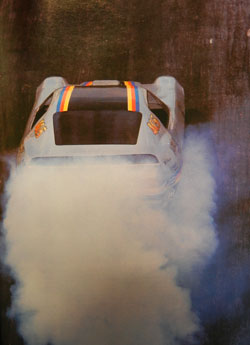 |
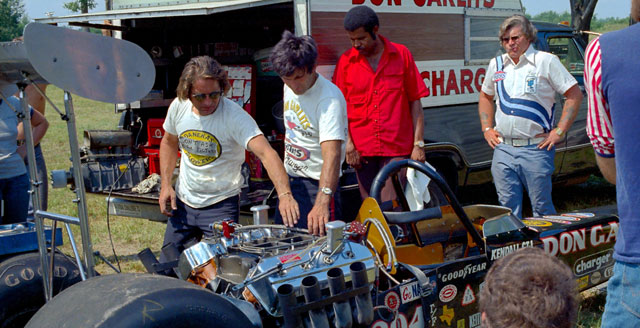 |
“I cannot remember exactly how this happened, but a few weeks after Englishtown, for some reason, Lovett (maybe wary that I might be exploited by this unknown guy) requested that I shoot for him at Indy. I think he didn't want to see my spirit for shooting ‘professionally’ deflated by what he saw as a potentially risky crapshoot. Shooting for him and ND guaranteed getting lots of images published, while shooting for Jack might result in a whole lot of nothing. There may have been more politics to it, but my real loyalty was with Les anyway, so I agreed to work primarily with him. But I still wanted to shoot for Plisky (whose aspirations and planning were definitely top-notch; shooting nothing but Kodachrome and looking for revealing, personality-driven images from an insider's point of view, which is really what I and my brother loved to focus on), so I ended up splitting my time between coverage for ND and for Jack's project. My brother, on the other hand, shot exclusively for Jack, and the bum got some of the best photos in the book, my favorite probably being the long-lens shot of Dale Emery's burnout from above and behind (Pete was on the bridge behind the starting line) seconds before Emery had his crash at speed that broke his arm severely. But I got my share of shots in the book, too, including the one of ‘Grumpy’ that you showed earlier. Another favorite of mine is the full-page vertical of Garlits working in the pits, if only because my brother is standing in the background, sweaty and sunburned, staring eagle-eyed at ‘Big’ with a camera slung over his shoulder. In retrospect, of course, I wish I'd devoted the entire event to John's book, which cost him his shirt but left a truly lasting mark on the mythological and visual history of the sport at the tail end of the era of huge 32-car fields.
"John and his boys were all over Indy, soaking it in like a ShamWow and directing Philips and Joern to organize and execute some pretty sophisticated staged shots. Though Jim was an aloof NYC big-time shooter (believe it or not, he only shot with Leica Rangefinders), he did come away with a lot of awesome images, and he did catch much of the spirit of drag racing, but he had no idea who the individuals he was photographing were, and his action shots sucked.
“After the race, in what was definitely the most frustrating part for me, Lovett went west with his Ziploc bag full of my film and Plisky went east with his Ziploc bag full of my brother’s and my film, and I flew back to college in upstate New York. John would be in touch off and on during the design phase, and I remember going to some shop in central Jersey to view chromalin proofs of some of the spreads ... it was then that I realized just how different this book was going to be. The image editing was great, the design was very clean and smart, and the reproduction quality was beyond belief, at least relative to the standards of magazine publishing at the time. But it was also clear that selling the product was going to be the hardest part, considering that the core audience was not accustomed to, nor particularly interested in, clean, smart design or a comprehensive, even poetic, narrative. Unfortunately, that was what proved to be the biggest flaw in the plan, and I'm afraid that John and his family paid a very high price for him to realize his vision. But no one can say that John Plisky didn't give it his all ... he put his future on the line at the biggest race in the sport and made it to the finish line, burning a bunch of pistons on the way, but with the heart of a champion. To this day, I'm extremely proud of the work I did on that project and cannot thank John enough for the invitation to participate in his dream.
“You've also definitely made my day. I've got two girls now the age that young John and his brother, Jimmy, were back in '77, and I've shown them the yearbook a few times, telling them how unique and innovative it was, to which they've of course said, ‘Sure, Dad; whatev ...’ In fact, until this Insider article appeared, I probably believed them more than myself.”
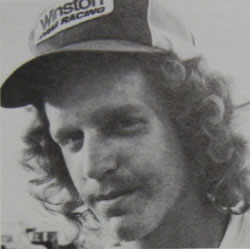 |
Scott Weney, who qualified for Indy in his debut in 1977 (that's his mugshot from the yearbook at right), wrote to Plisky, “This was and still is a great book. I was lucky enough to have raced and qualified at Indy that year and also won the Division 1 points championship, all in my first year driving a race car. I think the way it was done and the fact that it included Pro Comp was the great thing. Now everything is all about the Pros, and that just gets to be the same old stuff. In 1978, I couldn’t wait to see the next yearbook. Let me know if you ever are going to do another book like this; my company would buy ad space. If you ever come to the Maple Grove Nationals, we are only a half-hour drive from the track; stop in. I would like you to sign my copy.”
John Murnan II echoed the general sentiment for the book’s place on any serious race fan's bookshelf. “It is, hands down, the best drag racing publication I ever bought,” he wrote. “I still have it and will keep it forever, and I read it at least once a year. No surprise that this usually coincides with Labor Day weekend, I guess. I wish there had been more demand, as I would have bought a copy every year. I loved the comparisons between the drivers and cars and knights and their steeds. I was saddened to read that Mr. Plisky passed away at the too-young age of 71, but I wrote to his son and told him how proud he should be of his dad's efforts. Certainly, this was one of the best drag racing publications ever put together. Thank you for taking the time and making the effort to add details to the story. As always, your writing and your contacts have made my day more enjoyable. And thanks to Craig Hughes for prodding you to tell the story and even loaning you his copy of the book. Now you need to get yourself one.”
Funny he should mention getting a copy. As you may remember, I turned down one fan’s offer to give me his – just didn’t seem right – but I was more than happy to accept the generous offer from former fuel-racing great Richard Tharp, who had a spare. After winning Top Fuel at the 1976 event, Tharp was runner-up at that 1977 U.S. Nationals to Dennis Baca. ("Garlits went over there and worked on his car and gave him his tires and his blower," reported Tharp). He offered his praise for the book: "Everybody was in it; it's unbelievable."
Tharp also told me that he had planned to be in Indy this year with his former car owner, Bob Creitz, to cackle their old car (the one that Tharp was driving alongside "Big Daddy" when Garlits had his infamous 1970 Lions accident), but Creitz passed away just before the event.

I also heard from several people who added updates to Chuck Rearick’s Where Are They Now? list of Pro Comp qualifiers. I had purposely left Rearick’s comments intact (other than correcting that Gary Southern had died, which he hadn’t) and knew that some of the gaps would be filled in by the Insider Nation.
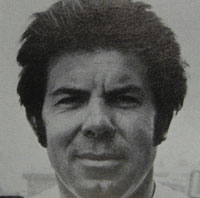
Marlis Williams
|
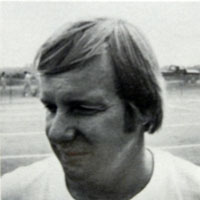
Bob Chipper
|
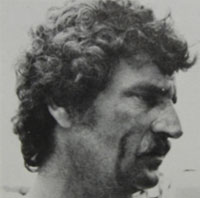
Wilfred Boutilier
|
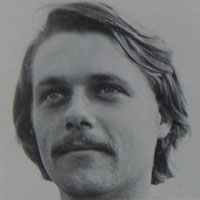
Al Kenny
|
Jim Buxton, manager of vehicle verification, Mitsubishi Motors R&D of America Inc., filled us in on Marlis Williams. “Several years back, Marlis worked for Mitsubishi Motors in Cypress, Calif. He was my manager, and I enjoyed working with him as he had many good stories to tell. He told me that many years back, while drag racing, he had a terrible crash and was in the hospital for several months. After that, he quit racing. Marlis left Mitsubishi and ended up in Arizona working for someone building hot rods. The last time I saw Marlis was at the L.A. Roadsters show in about 2008.”
Mike Lewis, former general manager at Maple Grove Raceway and current VP at Don Schumacher Racing, noted that Bob Chipper passed away a few weeks ago and that Al Kenny is still active as a Super Comp racer. He also became Jeg Coughlin Jr.'s father-in-law when his daughter Samantha married Jeg. "Great yearbook. Great story.”
And funny this should come up, too. I was on the starting line in Indy watching Samantha intently in the semifinals of Super Comp (where, sadly, she red-lighted), and Al himself stopped me to make sure I was going to let everyone know he was doing much more than the bracket racing Rearick had cited, including his Super Comp win at the 2003 Finals.
As far as “Wild Wilfred” Boutilier goes, I had heard from his wife, Sue, a few months ago, who reported, “He is alive and well and at age 72 still working a 60-hour week. He is self-employed (W.W. Engineering) and a manufacturer of rocker arms and flat tappet lifters for the racing industry. I am very proud of him and his accomplishments as we have customers all over the world. I don't think he will ever be able to get racing out of his blood.
 |
“Tom Ridings is in SoCal, now a Porsche collector of sorts,” wrote Glenn Gaskey. “He likes the obscure ones. Have seen him at the Irvine Calif., Cars and Coffee gathering every Saturday morning. My dad (Leo Gaskey) worked for Bud Ridings at Ridings Cadillac in Long Beach, Calif. Tom began to hang out at our house, where we kept our Killer Whale A/FC; it was a Ken Cox-chassised nitro-burning cast-iron 392 hemi. My dad and Tom got together and bought Mert Littlefield’s old Air Force Vega and ran BB/FC for a little while. After Tom got out of drag racing, he raced off-road cars and had a Yamaha dealership where Reath Automotive used to be on Cherry Boulevard in Long Beach. He now owns the buildings after his parents passed away. He is still around and doesn't look much different than he did 30 years ago.” (Jon Langel reported that Ridings owns and operates Long Beach Motorsports.)
And finally, there’s this great tale about the yearbook. Frederick Franz had a copy but also wanted to go to Indy, so he put his copy up for sale on eBay, where it was quickly gobbled up for the princely sum of $135 by our old Insider friend Simon Menzies. Franz got himself a Monday ticket, and although we missed connecting in Indy, I’m glad that both he and Menzies got what they wanted.
Bob Frey, himself a collector of old magazines and programs, was shocked at the price that the yearbook commanded (most other copies go for below $50), joking that my articles surely had driven up the price and would I be interested in writing articles about some of his collectibles to help inflate their value. I wrote a joking note to Simon – “Wow, I guess you really wanted that book!” – and he pointedly responded, “I only wanted it $1 more than the guy who bid $134. I lost mine in a flood years ago, and this was the first one I've seen for sale. Thanks to your column, I'll have another copy.”

Just one more quick note. Today is the 34th anniversary of the passing of the great “Jungle Jim” Liberman, whose life ended way too soon in an early-morning collision with a bus in West Chester, Pa. I share with you another quick story of a fan’s interaction with "Jungle,” from prolific Insider contributor “Chicago Jon” Hoffman.
“I especially liked the story from Tom Haman, who wanted that ‘ultimate souvenir,’ because it strikes close to home, but after shaking the cobwebs loose, I realize that in telling MY story, I have to challenge none other than ‘Berserko Bob,’ certainly no small feat, so allow me to explain.
 |
“ ‘Jungle Jim’ wasn't on the East Coast the weekend before Indy in 1977; he was at Great Lakes Dragaway for the National Challenge. Now, since B.B. has been to, like, a ba-ZILLION more races than I, it’s fair to give him a mulligan on this one, but after qualifying on Saturday, I caught up with Jim by the concession stand. We were both engaged in the all-American activity of looking at chicks! This gal came by, she had a T-shirt that said 'High Roller' with giant dice strategically placed on her ... well, you get the idea! Jim busts out a big ol' smile and yells out, ‘Hey, roll me a seven!!’ I followed up with something truly inspired, probably ‘Duuhhhh ... good one ‘Jungle!’ It was at this point that I noticed he had a box under one arm, which he then upended into a nearby trash barrel. ‘Jungle’ strolls away, and I look in the can -- he threw away a piston! You never saw someone dive into a garbage can so fast in your life!!
 |
"Sunday’s eliminations were rained out, and so the following weekend was Indy. Only late on Sunday afternoon did I notice ‘Jungle’s’ truck in the pits, scribbling down in my journal at 5:35 p.m., ‘Why didn't you run, Jim?’ And then, and it’s sort of a ‘Where were you when Jack Kennedy was shot?’ deal, the following weekend, at the makeup for the National Challenge, the announcer told us on the PA what had happened in West Chester on Thursday.
“There’s no way of accurately tracking a racer’s schedule from 34 years prior, and the chance is that when I saw ‘Jungle Jim’ racing that night at 'Broadway Bob’s' that it was the last pass he took down the quarter-mile. Looking at the calendar, there’s the possibility of two Wednesday-night-under-the-lights deals somewhere, but I find myself a bit of a hopeless romantic sometimes, and if my mind wants to twist it that I have a piston from at least one of -- if not his final -- pass down the track, well, what can I say?? Of all the stuff I've hauled home from the track, be it freebie hero cards, big $$ diecasts, shirts fired from a cannon, whatever, in my display case in the bar is this piston that my big dumb head knows came from a legend, albeit via a trash can.”

 |
Jon also made light of a jestful comment I made concerning the growing number of Liberman and Chi-Town Hustler stories I was receiving after an item on them. Referring to the literary flood of stories and photos that followed the months-long wedge-dragster thread a year ago, I wrote, “Too bad neither had a wedge Top Fueler.”
Jon challenged, “You once said you have a love of Photoshop, so you should craft up a 'Jungle-wedge,' because you know that this is where this is heading, ha-ha!”
So, in a few minutes, I crafted this. It ain’t graphics-designer perfect or pretty, but it kinda makes you stop and wonder, “What if,” no? Hey, that’s what I do.
RIP, JJ. We still miss ya.



















































